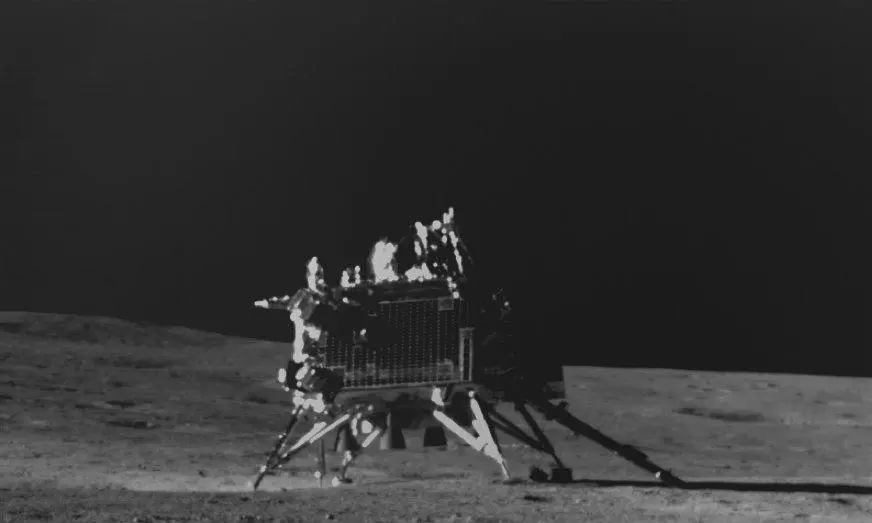
Why India, China are keen on joining Russia’s project to set up nuclear power plant on Moon
While India's timeline trails Russia and China’s joint efforts, its involvement in the lunar nuclear project could fast-track its participation in the creation of lunar infrastructure

In a significant development, India and China, known for their arch rivalry, are all set to collaborate with Russia to establish a nuclear power plant on the Moon.
New Delhi has reportedly evinced keen interest in joining hands with Moscow for setting up a nuclear power plant on the lunar soil. The initiated is being led by Russia’s state nuclear corporation Rosatom. Addressing the Eastern Economic Forum at Vladivostok, Rosatom chief Alexey Likhachev shed light on growing international interest in the project. “The task we are working on is the creation of a lunar nuclear power plant with an energy capacity of up to half a megawatt,” Likhachev said. “Both our Chinese and Indian partners are very interested in collaborating as we lay the groundwork for several international space projects.”
What is the project all about and what does it aim to achieve?
As per media reports, the ambitious project led by Rosatom is part of a larger plan to establish a permanent lunar base in partnership with China. The project aims to install a small nuclear reactor capable of generating up to 0.5 megawatt of energy, which will provide the essential power needed to support a future lunar colony, according to a report in The EurAsian Times citing Russia’s state news agency Tass.
Russia has already made some headway on the project. The goal is to launch the nuclear reactor by 2036, providing a reliable source of energy to power the proposed lunar base, which Russia and China are jointly developing. This base, known as the International Lunar Research Station (ILRS), is expected to be operational between 2035 and 2045 and will serve as a hub for scientific research, open to all interested countries.
The initiative aligns with India’s plans for a manned lunar mission by 2040 and the establishment of a lunar base. Therefore, India sees this collaboration as a potential opportunity to accelerate its space goals.
While India's timeline trails Russia and China’s joint efforts, its involvement in the lunar nuclear project could fast-track its participation in the creation of lunar infrastructure, The EurAsian Times reported.
The technological solutions needed for this complex venture are reportedly nearing completion. Rosatom plans to construct the nuclear plant autonomously, minimising human involvement, a significant feat that underscores the advancement in space technology.
What has prompted these countries to establish a nuclear power plant on the Moon?
The Moon’s 14-day long lunar nights make solar energy unreliable, while nuclear power offers a continuous and stable energy source critical for sustaining a long-term presence. Nuclear power is viewed as the most viable solution.
Russian space agency Roscosmos, and China’s National Space Administration have been advancing their space collaboration since 2021, when they first unveiled plans to build the ILRS.
However, geopolitical tensions, particularly with the US, could influence the scope and nature of international cooperation on the lunar base.
The importance of nuclear power for lunar exploration cannot be overstated. NASA has been considering the use of nuclear reactors for future lunar bases, as solar power has limitations.
“While solar power systems have limitations on the Moon, a nuclear reactor could be placed in permanently shadowed areas (where there may be water or ice) or generate power continuously during lunar nights,” NASA has emphasised.
This capability makes nuclear power critical for both manned and unmanned missions aiming to establish a long-term presence on the Moon.
India’s involvement in this lunar nuclear power plant project is another step in the global race to establish a permanent presence on the Moon.
Despite the complexity of the project, safety remains a top priority. Scientists have assured that transporting nuclear fuel to the moon is safe, with minimal radiation risks, even in the event of a launch failure. Moreover, the reactors are designed to automatically shut down if any issues arise, further reducing safety concerns.
How’s India moving ahead in terms of Moon exploration?
Indian Space Research Organisation (ISRO) Chairman S Somanath outlined a provisional roadmap for Moon exploration during a symposium organised by the Indian Society of Geomatics and the Indian Society of Remote Sensing in November last year. This plan builds upon India's recent lunar accomplishments and its growing human spaceflight ambitions.
In 2023, India became the fifth country to achieve a successful robotic landing on the moon with its Chandrayaan-3 mission. Since that momentous landing, ISRO has continued its strides towards future lunar missions. The designs for Chandrayaan-4 and 5 have already been completed and are pending approval from the government. The space agency is also working on a deadline to set up India’s first space station by 2035 and land the first Indian on the Moon by 2040.
Following Chandrayaan-3 success, Prime Minister Narendra Modi urged the country to pursue “new and ambitious goals”, including sending astronauts to Moon by 2040.

